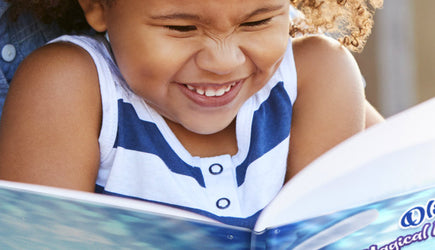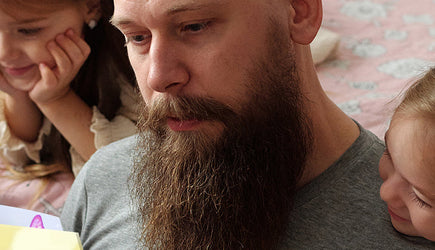10% Off Your First Order
Be first to know about new stories and offers

Reading has long been a cornerstone of early learning. Parents and educators debate which format best supports cognitive growth and literacy skills. Two clear contenders are traditional storybooks and personalized storybooks. Each holds distinct advantages for young readers. Traditional books often feature classic narratives and familiar characters. They build cultural understanding and shared memories. Personalized books place the child at the heart of the tale. They use names, likenesses and personal details to spark engagement. This article unpacks key differences between the two types. It draws on recent studies and real world data to provide a balanced view. There is a growing body of research that points to unique benefits in both approaches. A study showed that children smiled and laughed more with personal touches in stories (lithub.com). Another report found that print formats yield stronger comprehension scores than touch screens (pmc.ncbi.nlm.nih.gov). Throughout this text, hyperlinks lead to further reading and sources for each fact. We will also introduce Story Bug, a company that creates personalized books to inspire creativity, self-expression and a lifelong love of reading. Their mission celebrates every child’s uniqueness and promotes empathy by weaving in diverse backgrounds and abilities. In exploring this topic, the aim is to help parents, tutors and librarians find the best reading strategy for each child.
Reading in the early years shapes vocabulary, listening skills and imagination. A child’s brain forms millions of new connections every second after birth. Shared reading time offers exposure to syntax, tone and cadence. Each book becomes a mini lesson in language structure. Research has linked regular reading to better cognitive performance and school readiness. One meta-analysis showed preschoolers who engage in story time daily score higher in language assessments.
Memory retention varies across formats. Print books demand sequential focus. Readers turn pages and revisit sections at will. A study on comprehension compared print storybooks with digital and found print led to higher recall of plot and details (pmc.ncbi.nlm.nih.gov). Another found young children’s comprehension did not differ much between print and digital if material was engaging (sciencedaily.com).
Early reading also boosts empathy and social understanding. When a character faces a challenge, a child learns to identify with emotions and solutions. This builds social skills and self-regulation. Studies highlight that interactive parent-child reading of social-themed picture books plays a vital role in social-emotional development (frontiersin.org).
A strong foundation in reading can foster lifelong habits. Engaging narratives ignite curiosity and motivate self-directed learning. This extends to other subjects such as science and history. As children explore new worlds through text, they gain background knowledge that enriches later lessons. In summary, early reading matters for more than just words. It nurtures emotional and intellectual growth and equips a child with tools for future success.
Traditional storybooks come in myriad forms. They range from picture books with simple plots to chapter books that guide readers through complex worlds. Classics like “The Tale of Peter Rabbit” or “Alice’s Adventures in Wonderland” remain popular choices. Each title often carries cultural heritage and generational nostalgia.
Benefits of traditional books extend far beyond entertainment. Stories with realistic characters can foster prosocial behaviour. One study found that children apply lessons best when characters are human and relatable (kqed.org). Such narratives help youngsters understand feelings and actions in real life.
Beyond moral lessons, classic tales build a shared literary heritage. When a class reads the same book, a community forms around discussion and analysis. Teachers can guide reflection on themes such as friendship, bravery and loss. This shared culture is a social glue in many schools and libraries.
Limitations do exist. Some children struggle to connect with tales that lack personal context. A story about a child in a far-off land may feel distant to a reader unfamiliar with that setting. Relevance can drop if the child sees no reflection of their own life. This gap in personal identification can lower engagement and motivation. In addition, series and familiar characters can leave out less popular voices. Diversity in traditional titles has improved, but representation gaps persist.
Classic books demand that readers invest imagination to fill details. Rich language and evocative illustrations invite creative thinking. Yet, this style may intimidate early or reluctant readers. Complex sentence structures and archaic words pose barriers. In some cases, children need extra support from adults to unlock meaning. Overall, traditional storybooks hold a timeless appeal but may not meet every child’s unique needs.
Personalized storybooks have grown in popularity over the last decade. They integrate the child’s name, interests and appearance into the narrative. Publishers use online platforms to gather details. The final product often arrives as a silky paperback that looks and feels like any other book.
Emotional engagement is one clear benefit. Children laugh and smile more when they see their own name in a tale (lithub.com). This simple change can make story time feel magical. Adding personal photos or avatars strengthens the bond further.
Vocabulary acquisition also seems to improve in personalized formats. Research on preschoolers found they learned new words faster when the story featured their name and traits (scientificamerican.com). This boost in word recognition can translate into better reading scores down the line.
Evidence for increased platform usage supports the case for personalisation. An educational app saw a 14 per cent rise in overall app interactions once it introduced tailor-made content recommendations (arxiv.org). Young users returned more often and spent longer on each session.
Story Bug is one of the leading names in personalized books. They centre every child in their own adventure. Each book becomes a special keepsake that teaches creativity and self-expression. Their mission celebrates every child’s uniqueness. They weave diverse backgrounds and abilities into each tale to foster empathy. Children are invited to see themselves as heroes of their own stories.
Drawbacks do exist. Some research suggests nominal personalisation does not always help a child grasp a story’s moral and apply it in real life (scholarcommons.scu.edu). This points to the need for deeper narrative design rather than mere name swaps.

Stories hook us by touching our emotions. A child identifies with a character’s joys and fears. This emotional bond supports self-awareness and confidence. Personalized elements can deepen that connection. Seeing one’s own name in a tale makes it feel as if the story speaks directly to the reader.
Studies compare emotional responses between personalized and non-personalized books. One found that children exhibited more joy and attention with tailored content. They turned pages faster and asked more questions. When a reader relates strongly, they stay focused for longer.
In traditional books, empathy forms through universal themes. A tale of friendship or loss can resonate across cultures. This broad approach helps build understanding of diverse perspectives. Personalized stories add another layer by linking events to the reader’s own life. This can help young minds process feelings with extra clarity.
Not all personalized stories yield the same results. Superficial name changes may not provoke a genuine bond. Richer personal details like family names, favourite hobbies or local landmarks work best. This depth drives higher levels of engagement and recall.
In both formats, illustrations play a vital role. Colorful images capture attention and clarify text. They also aid emotional learning by showing facial expressions and body language. A balanced mix of vivid art and clear prose supports healthy emotional growth.
Reading shapes cognitive skills beyond language alone. Problem-solving, memory and critical thinking grow as children follow plots and predict outcomes. Traditional stories often pose mysteries or moral dilemmas. This prompts readers to weigh options and consider consequences. In personalized texts, kids may feel more invested in solutions since they “star” in the scene. This can further stimulate reasoning skills.
Social skills and empathy receive a boost from narrative immersion. When kids observe how characters behave in social settings, they learn social cues. Empirical work has shown that interactive reading of social-themes supports emotional growth (frontiersin.org).
Vocabulary growth links to the type of book and format. Children often ask more questions about words in personalized texts. A name swap can spark curiosity: Why does the story mention my town? This curiosity leads to deeper discussion and word learning.
Traditional books excel in teaching cultural literacy. Familiar tales appear in films, plays and class curricula. This repetition cements key concepts. Personalized books open doors to new genres. A child who adores a custom fantasy book may seek out other fantasy works, broadening their reading habits.
Both styles help build attention span. Long form narratives teach patience and focus. Shorter personalized tales offer quick wins that motivate continued reading. A blend of both can nurture varied skills and maintain interest.
Selecting the right book often depends on your child’s interests. Note their favourite topics—animals, space or friendship stories. Traditional books offer tried and tested titles in each category. Libraries and bookstores usually feature curated lists for age groups. Librarians can suggest classics and new releases that match reading levels.
For personalized books, start by identifying details to include. Use a service like Story Bug. You provide the child’s name, hair color, interests and hometown. They craft a story that feels bespoke. Pay attention to customization depth. A story that only changes the name may feel less authentic than one that uses specific traits.
Budget is another factor. Personalized books tend to cost more than mass-market paperbacks. Keep an eye out for deals or group orders. Traditional titles often have second-hand options at low cost.
Time matters too. Ordering a personalized book can take days. If you need a gift soon, a traditional title may work best. On the other hand, the extra wait can build anticipation and make the arrival of a personal book even more special.
Blending both styles offers a balanced approach. Rotate reading lists. Choose one classic title per week and one customised tale. This mix keeps enthusiasm high and broadens skills. Storytime then becomes a varied adventure, full of familiar plots and personalized magic.Both personalized and traditional storybooks bring notable value to childhood reading. Traditional titles tie a child to a wider cultural dialogue. They foster shared learning and timeless lessons through realistic characters and moral themes. Print formats can boost comprehension and long term retention.
Personalized storybooks spark immediate emotional engagement. They raise smiles and laughter and can speed up new word learning. Kids see themselves as heroes, which can build self-esteem. Careful customization and narrative depth matter more than mere name changes.
A smart reading routine blends the two. Parents can select classics that build cultural literacy alongside custom adventures that hold personal meaning. Libraries and online services both have roles to play. Exploring both formats helps children develop a broad set of skills and a lasting love of books.
Story Bug stands out as a brand that celebrates individuality. Their books invite children to see diverse heroes in print. They support creativity and empathy by weaving varied backgrounds into their narratives. This approach underlines that every child deserves to feel seen and heard in the stories they read.
 Personalized Storybooks | Psychology Behind Personal Names
Children Seeing Their Name in a Story Kids light up when they hear their own name in a story. Personalizing a tale makes it feel special. It pulls them in. Calls to mind their own world. A name can spark...
July 3, 2025
Personalized Storybooks | Psychology Behind Personal Names
Children Seeing Their Name in a Story Kids light up when they hear their own name in a story. Personalizing a tale makes it feel special. It pulls them in. Calls to mind their own world. A name can spark...
July 3, 2025
 Personalized Storybooks vs Traditional Storybooks: A Deep Dive
Reading has long been a cornerstone of early learning. Parents and educators debate which format best supports cognitive growth and literacy skills. Two clear contenders are traditional storybooks and personalized storybooks...
June 27, 2025
Personalized Storybooks vs Traditional Storybooks: A Deep Dive
Reading has long been a cornerstone of early learning. Parents and educators debate which format best supports cognitive growth and literacy skills. Two clear contenders are traditional storybooks and personalized storybooks...
June 27, 2025
 Easter Memories That Bloom Forever: Beyond the Chocolate Eggs
Easter is a season of sweet treats, joyful gatherings, and the delightful thrill of egg hunts. But what if you could capture the magic of this special time..
March 3, 2025
Easter Memories That Bloom Forever: Beyond the Chocolate Eggs
Easter is a season of sweet treats, joyful gatherings, and the delightful thrill of egg hunts. But what if you could capture the magic of this special time..
March 3, 2025